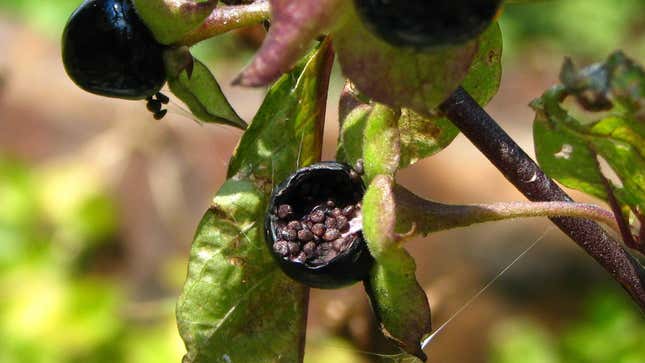
From the desk of medical irony comes this recent case study from Germany. Doctors there say a patient of theirs ended up sick in the emergency room after being poisoned by a homeopathic remedy—quack treatments that by definition are supposed to contain virtually no active ingredient. Thankfully, the man recovered without any lasting harm.
The case report, published late last month in Clinical Toxicology, details a 53-year-old man with no preexisting health problems who visited the emergency room of a hospital affiliated with the Technical University of Munich. He had symptoms of confusion, anxiety, slurred speech, and ataxia (the loss of muscle control and coordination). All of these symptoms had started to appear after he took a homeopathic treatment containing extract from the belladonna plant (Atropa belladonna), also called deadly nightshade.
Doctors soon suspected that the man was suffering from anticholinergic syndrome, a condition caused by too much inhibition of the neurotransmitter acetylcholine. Tests of the man’s blood, as well as the concoction the man took, detected the presence of atropine, which is naturally found in belladonna and is well known to inhibit acetylcholine. Atropine has long been used medically to dilate the eyes or stabilize a too-low heart rate, but it’s dangerous at too high (or very low) doses, and can cause the symptoms above as well as others like sensitivity to light, gastrointestinal problems, and even hallucinations. Both the plant itself and its berries are also toxic when eaten, especially to children.
Anticholinergic syndrome isn’t the most pleasant experience in the world to go through, but it’s rarely life-threatening. And in this case, the man was simply observed and recovered on his own without needing any specific treatment, the doctors reported. But they also estimated that the levels of atropine found in the homeopathic preparation were 600 times higher than advertised.
“Rare but possibly dangerous manufacturing errors should be considered when faced with symptoms occurring after ingestion of homeopathic or holistic remedies,” the authors wrote.
The irony here is that homeopathic medicine, which emerged in the late 18th century, is said to work by diluting an ingredient to the point where essentially none of it remains in the preparation people then take (either a liquid solution or a sugar pill doused in it). The logic goes that these ultra-dilutions will somehow unlock their therapeutic potential and treat whatever ails you. In truth, homeopathy is little more than a glorified placebo when done right and occasionally harmful otherwise.
In fact, this isn’t even the first time belladonna has played a part in people being poisoned by homeopathy. In 2016, the Food and Drug Administration warned parents to stay away from homeopathic teething products marketed to have belladonna, following reports of injuries and 10 deaths linked to their use in infants dating back to 2010. Their investigation later showed that atropine and a similar chemical could be found in these products at varying doses, and the warning eventually led to the discontinuation of a popular teething brand connected to the poisonings.
If nothing else, this case should be an apt reminder of why these useless “drugs” aren’t always as safe as marketed.